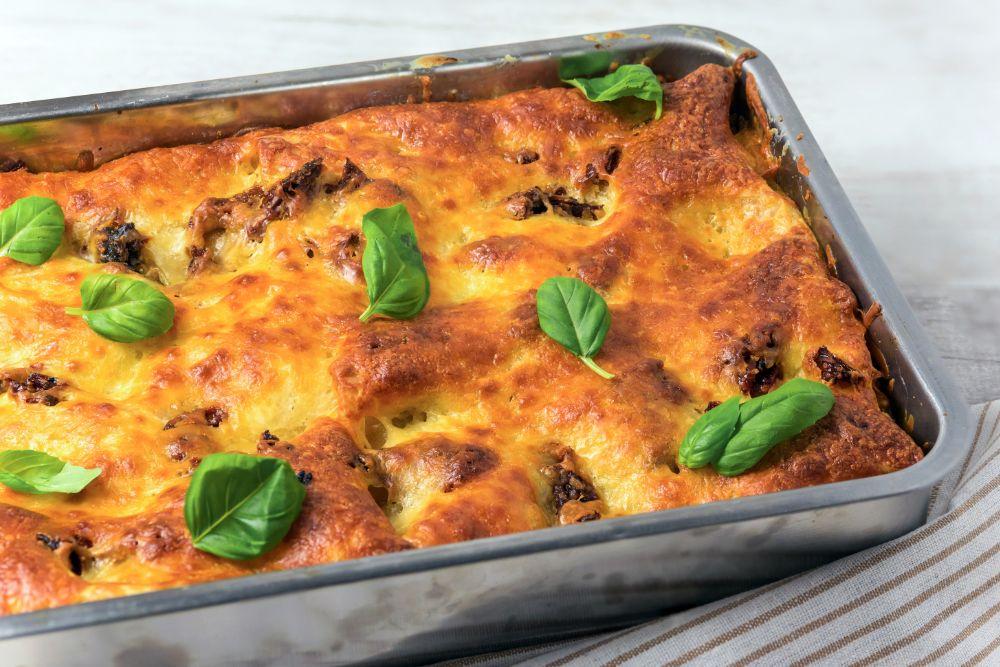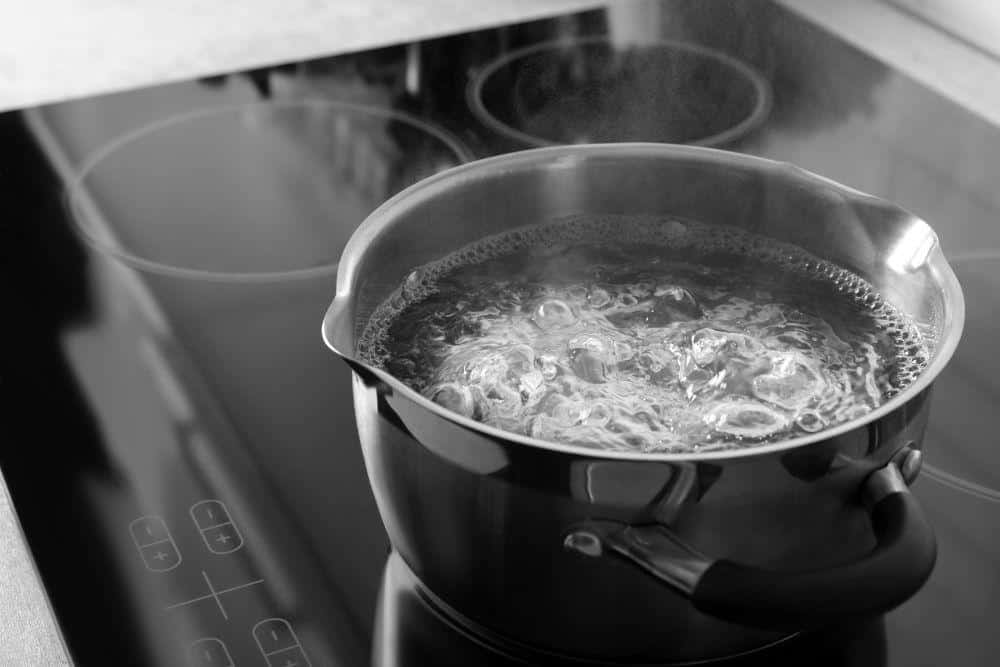There are comfort foods, and then there is lasagna (also called lasagne).
Arguably the comfort food of comfort foods, a good lasagna can turn a family dinner into a celebration and, if made correctly, is even better the next day.
For most varieties cooking pasta involves submerging pasta in a large pot of boiling water for a certain amount of time to achieve the desired level of tenderness. The cooking time will vary based on the type of spaghetti noodles you're dealing with.
Elevation Matters
Thickness and ingredients of the pasta contribute towards the total cook time - as does your elevation. Where I live in Colorado, the elevation is 6,000 feet. As a result, there is slightly less air pressure which means that water boils at a lower temperature. Cooking at this lower temperature actually means that it will take longer for pasta to cook while boiling.
Lasagna is subject to an epic debate: Should you boil the noodles, go with precooked noodles or do something altogether different?
Here are the answers to that pressing question and a few suggestions for making the best lasagna you ever had (except for Mom’s lasagna, which everyone knows is the best.)
So, Boil? No Boil? Oven-Ready? Which is Best? How you cook lasagna depends entirely on you. If you are a traditionalist, using lasagna noodles that are not boiled instead of homemade noodles seems like you are violating a time-honored tradition by not sticking to the fine points of a sacred lasagna recipe.

Boiling Lasagna Noodles Before Baking Can Ensure a Fully Cooked Noodle
The answer to this is “it depends.” Traditionally, regular lasagna noodles were always boiled for about 10 minutes and to suggest that you could cook great lasagna without boiling noodles was the same as arguing medium rare chicken was an option.
Boiling noodles both thoroughly cooked the lasagna noodles and infused them with moisture that helped the lasagna ingredients meld perfectly.
Not cooking the lasagna noodles before baking the lasagna was asking for trouble. What is conveniently ignored was that not using homemade lasagna noodles was also breaking tradition.
However, if you are pressed for time or looking to reduce the amount of work needed, not boiling your noodles or using oven-ready noodles is a great alternative. Pre-soaking traditional lasagna noodles is a great compromise.
To hear some tell it, not boiling your lasagna noodles first was a passive-aggressive way to tell your family you despised them, but the reality is the most you ended up with was a tougher noodle lasagna that did not meld together as well as it could have. The reason for that is boiling lets all the ingredients in the noodles both cook and get infused with water.
The most significant reason is time. It takes time to make a great lasagna. Cooking the meat, creating the sauce, mixing cottage cheese and ricotta cheese, boiling the noodles, shredding parmesan cheese and mozzarella cheese, and then baking it all factor into a dish that needs love and attention to achieve perfection.
As one cooking adage goes, “You don’t have to use fresh pasta and boil the noodles in lasagna first, but what you are creating is an Italian dish, not true lasagna.”
A second reason is that it is not as much work as if you boil the lasagna noodles first. You must cook the sauce and meat, shred the cheese, do a lot of mixing, and then layering. Boiling noodles and ensuring they get cooked properly requires more labor than just throwing them in a dish and adding meat, tomato sauce, and cheese.
Another reason is that some people like the texture created using un-boiled lasagna noodles and just relying on the water in the spaghetti sauce to cook the noodles. If you have ever had a lasagna that was very firm with noodles that were almost chewy, you probably were eating lasagna made from uncooked noodles.
The texture tends to create distinct layers of food: Cheese and sauce melded but separated by a layer of noodles, followed by meat sauce and a layer of noodles, and so on. The layers can be so distinct that if you spread your lasagna on your plate, you will see distinct “lasagna sheets” of food, much like layered sediment geologists use to date different layers of stone or mud.
With boiled lasagna noodles, the product tends to be a merger of layers that almost makes one lasagna sheet indistinct from the other. Most people prefer this approach because it creates a true medley of tastes from the ingredients and merged elements.

By Boiling Your Lasagna Noodles First, You Can Ensure That The Noodles Cook Completely
No boil noodles, or “oven ready lasagna noodles", are an alternative cooking method used by the cook who is short on time. To understand how they work, you must first understand what they are.
These oven ready noodles are precooked. To make your lasagna, you make your lasagna layers, place them in the oven and broil them. The result is a more consistent texture than regular lasagna noodles and a bit more of a merger of ingredients than if you used dry, uncooked lasagna noodles and let the water in your meat sauce cook them.
Making Lasagna with Barilla Pasta's Oven Ready Lasagne Noodles That Don't Require Boiling
Some people like to soak their oven-ready noodles in hot water before making their lasagna layers, but that is unnecessary. Oven-ready noodles are more fragile than traditional dried pasta, which can make working with them once they are wet. Still, many swear by soaking oven-ready noodles for 15 minutes in hot water and then creating your lasagna dish.
The alleged benefit of oven ready lasagna noodles is that you save a lot of prep time. That might be, but you must cook the lasagna anywhere from 15 minutes to about a half-hour longer, depending on what noodles you use. If you soak your noodles first, you eat up about 15 minutes, then cook the lasagna for about an hour.
Plus, you still have to cook all the other ingredients. So, while you might save time at one stage of the sequence, you still are spending time at all the other stages and your savings in cook time is negligible compared to using boiled lasagna noodles.
That means your savings is in the amount of work you must do. That can be significant if you are making your lasagna at the end of a long day at work.
Additionally, there is the texture, which many people find preferable to the “mushy” lasagna that boiled lasagna noodles create.

Oven Ready Noodles are a Good Alternative When Short on Time
An alternative to boiling, not boiling, or using oven-ready noodles is to use regular lasagna noodles and soak them for 15 minutes in hot water first. Soaking gets the noodles soft and begins the process of infusing the noodle ingredients with water, plus you get the texture of traditional lasagna noodles, which many people find easier to work with when layering.
In the end, however, it comes down to you and what you and your family prefer.
